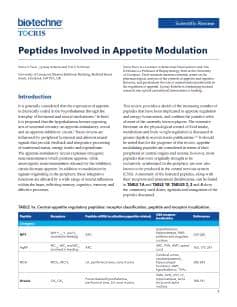NOP Receptors
The NOP receptor, (also known as ORL1, N/OFQ receptor), is a member of the opioid family of G-protein-coupled receptors that also includes κ, δ and μ receptors. The human gene encoding the NOP receptor has been localized to chromosome 20 (20q13.33).
NOP Receptor Agonists |
|
|---|---|
| Cat. No. | Product Name / Activity |
| 0910 | Nociceptin |
| Endogenous NOP agonist | |
| 3240 | SCH 221510 |
| Potent and selective NOP agonist | |
NOP Receptor Antagonists |
|
| Cat. No. | Product Name / Activity |
| 2598 | (±)-J 113397 |
| Potent and selective NOP antagonist | |
| 2481 | JTC 801 |
| Selective NOP antagonist | |
| 3573 | SB 612111 hydrochloride |
| Selective NOP antagonist | |
The NOP receptor, (also known as ORL1, N/OFQ receptor), is a member of the opioid family of G-protein-coupled receptors that also includes κ, δ and μ receptors. NOP receptor mRNA is found in high levels in the cortex, anterior olfactory nucleus, lateral septum, hypothalamus, hippocampus, amygdala, central grey, pontine nuclei, interpeduncular nucleus, substantia nigra, raphe complex, locus coeruleus and spinal cord.
The pattern of NOP receptor distribution suggests the involvement of the NOP receptor in motor and balance control, reinforcement and reward, nociception, the stress response, sexual behavior, aggression and autonomic control of physiological processes. The human gene encoding the NOP receptor has been localized to chromosome 20 (20q13.33).
External sources of pharmacological information for NOP Receptors :
Literature for NOP Receptors
Tocris offers the following scientific literature for NOP Receptors to showcase our products. We invite you to request* your copy today!
*Please note that Tocris will only send literature to established scientific business / institute addresses.
Peptides Involved in Appetite Modulation Scientific Review
Written by Sonia Tucci, Lynsay Kobelis and Tim Kirkham, this review provides a synopsis of the increasing number of peptides that have been implicated in appetite regulation and energy homeostasis; putative roles of the major peptides are outlined and compounds available from Tocris are listed.
